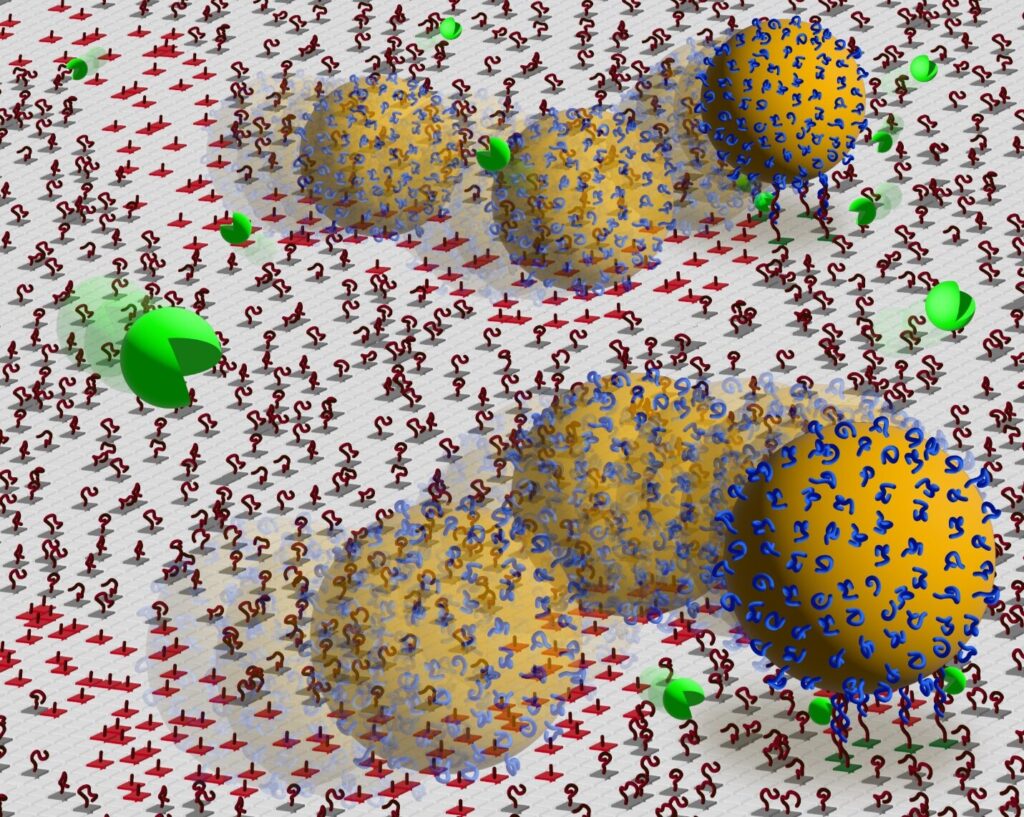DNA-nanoparticle motors are exactly as they sound: tiny artificial motors that use the structures of DNA and RNA to propel motion through enzymatic RNA degradation. Essentially, chemical energy is converted into mechanical motion by biasing the Brownian motion.
The DNA-nanoparticle motor uses the “burnt-bridge” Brownian ratchet mechanism. In this type of movement, the motor is propelled by the degradation (or “burning”) of the bonds (or “bridges”) it crosses along the substrate, essentially biasing its motion forward.
These nano-sized motors are highly programmable and can be designed for use in molecular computation, diagnostics, and transport.
Despite their potential, DNA-nanoparticle motors don’t have the speed of their biological counterparts, the motor protein, which is where the issue lies. This is where researchers come in to analyze, optimize, and rebuild a faster artificial motor using a single-particle tracking experiment and geometry-based kinetic simulation.
“Natural motor proteins play essential roles in biological processes, with a speed of 10–1,000 nm/s. Until now, artificial molecular motors have struggled to approach these speeds, with most conventional designs achieving less than 1 nm/s,” said Takanori Harashima, researcher and first author of the study.
The researchers published their work in Nature Communications, featuring a proposed solution to the most pressing issue of speed: switching the bottleneck.
The experiment and simulation revealed that binding of RNase H is the bottleneck in which the entire process is slowed. RNase H is an enzyme involved in genome maintenance, and breaks down RNA in RNA/DNA hybrids in the motor.
The slower RNase H binding occurs, the longer the pauses in motion, which is what leads to a slower overall processing time. By increasing the concentration of RNase H, the speed was markedly improved, showing a decrease in pause lengths from 70 seconds to around 0.2 seconds.
However, increasing motor speed came at the cost of processivity (the number of steps before detachment) and run-length (the distance the motor travels before detachment). Researchers found that this trade-off between speed and processivity/run-length could be improved by a larger DNA/RNA hybridization rate, bringing the simulated performance closer to that of a motor protein.
The engineered motor, with redesigned DNA/RNA sequences and a 3.8-fold increase in hybridization rate, achieved a speed of 30 nm/s, 200 processivity, and a 3 μm run-length. These results demonstrate that the DNA-nanoparticle motor is now comparable to a motor protein in performance.
“Ultimately, we aim to develop artificial molecular motors that surpass natural motor proteins in performance,” said Harashima. These artificial motors can be very useful in molecular computations based on the motion of the motor, not to mention their merit in the diagnosis of infections or disease-related molecules with a high sensitivity.
The experiment and simulation in this study provide an encouraging outlook for the future of DNA-nanoparticle and related artificial motors and their ability to measure up to motor proteins, as well as their applications in nanotechnology.


